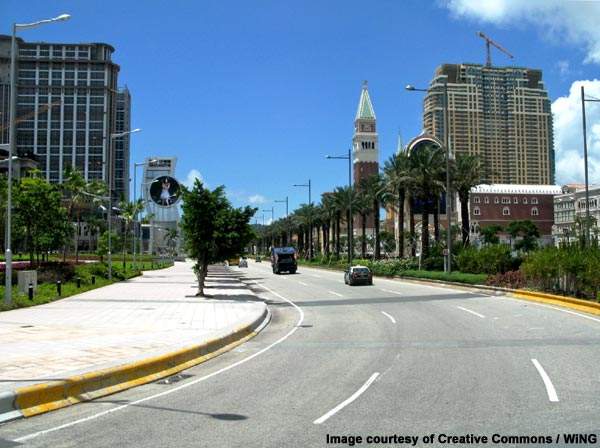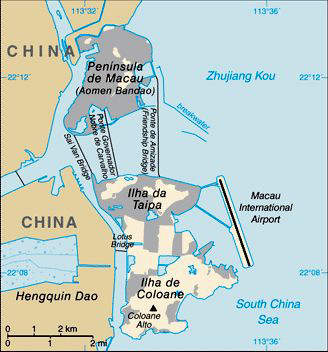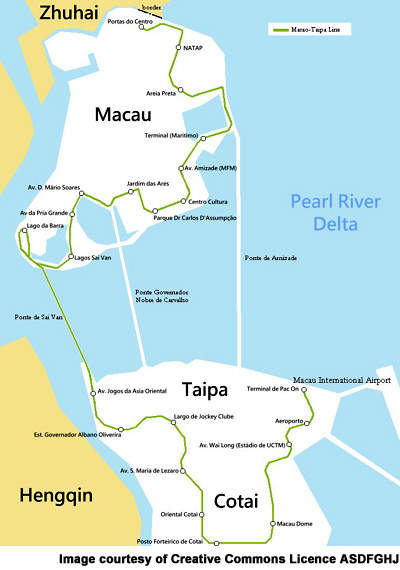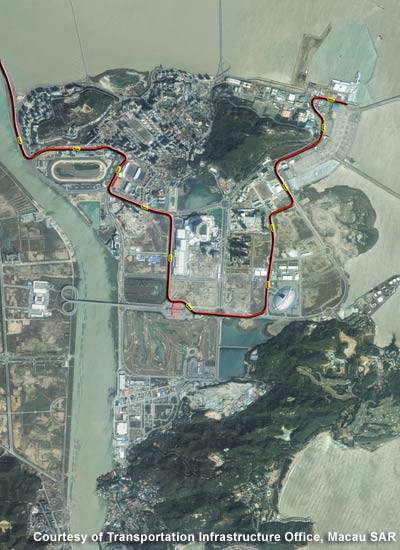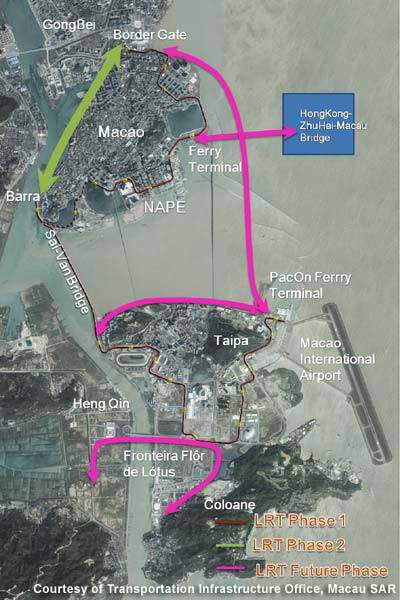Macau Light Transit System (MLTS), officially known as Macau Light Rapid Transit, is a rapid mass transit system being developed in Macau Special Administrative Region, China. MLTS will serve the Macau Peninsula, Taipa island and Cotai, along with major border checkpoints including Border Gate, Macau Ferry Terminal, Lotus Border and Macau International Airport.
Macau is a Special Administrative Region (SAR). It is spread across an area of 29.2km² and has a population of about 540,000. The primary mode of transport is road and there is currently no rail transport service.
The system will start operating by 2014. It will operate for 19h a day with a waiting time between trains of 3min during peak times and 3min to 6min at other times.
The project
MLTS will be the first rapid transit system in Macau. The Government of Macau proposed the project in 2003 but it faced public opposition and was held back.
In October 2006 the decision to construct the MLTS was taken. Site investigation for the project was carried out in 2008. In 2007 the project was estimated to require an investment of MOP4.2bn ($526m). An increase in material costs and modification of project plans, however, led to an increase in the figure, which now stands at MOP7.5bn ($938m). The new estimate excludes the construction of facilities such as car parks and bus stations.
The Transportation Infrastructure Office is responsible for the project. The office announced the construction plan for phase one on 17 October 2009. Phase one will run along the eastern coastal corridor and connect the north-east boundary with Taipa. The line will be approximately 21km long and elevated. There will be 21 stations.
Phase two will include lines in the western harbour area and is yet to be finalised. The overall MLTS capacity will be 8,000 passengers per hour per direction (pphpd) in 2014, increasing to 14,200pphpd in 2020.
Infrastructure
MLTS will feature driverless vehicles. The capacity of each car will be 100 passengers. Provision will be made for elderly and disabled passengers. Screen doors, handrail escalators and lifts will be provided at stations.
Rolling stock
MLTS will use automated guided vehicles and run on concrete tracks. On 2 December 2009 the Transportation Infrastructure Office called for tenders for supplying rolling stock and systems for phase one. The last date for submissions is 12 March 2010. The contract includes a design-and-build turnkey solution.
Routes
The MLTS project includes three line routes in its basic proposal. Line one, to Macao Peninsula, will start from Barrier Gate (Portas de Cerco) and pass along Areia Preta, and Nam Van District before reaching A-Ma temple. The track length for this route will be 10km. There will be 15 stations and the journey time will be 20min.
Line two, at Taipa, will follow the route from Sai Van Bridge (Porte do Sai Van) to Macao Stadium, Estrada da Baía de Nossa Senhora da Esperança branches, Cotai and Macao International Airport or Taipa Ferry Terminal. The track length will be 5.5km and there will be seven stations. The journey time will be 9min.
Line three will travel from Estrada da Baía de Nossa Senhora da Esperança to Cotai city. The track length will be 3.5km and the journey time will be 7min.
The routes will include a 2.6km underwater tunnel between Nam Van and Sai Van lakes and four underground stations.
Signalling and communications
A central control centre will control the MLTS using advanced monitoring and communications systems. Automatic monitoring technology will be used to maintain a fixed distance between trains. The automated guidance system will help avoid accidents.
The future
The MLTS will eventually be connected to the Guangzhou-Zhuhai intercity rail system. The connection will help in integrating the two systems.

